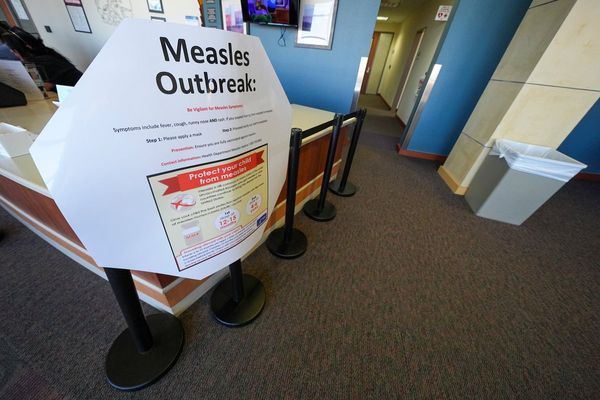In 2024, colorectal cancer is estimated to be the fourth most common cancer in men and women and the second leading cause of cancer-related deaths in the United States.
In 2000, there were 153,118 cases of colorectal cancer, peaking at 153,889 in 2003. Cases fell to 139,115 in 2012, rose to 147,445 in 2019, and then dropped to 129,820 in 2020 and 131,902 in 2021, likely influenced by reduced testing during the COVID-19 pandemic.
Between 2000 and 2021, nearly 3.5 million people were diagnosed with colorectal cancer, an amount comparable to the entire population of Connecticut in 2023. This averages to about 400 new cases daily and represents about 9.2% of all new cancer diagnoses during those years.
In 2021, there were an estimated 1,392,445 people living with colorectal cancer in the US, meaning one out of every 238 people were directly affected by the disease that year.[1]
How many people die from colon cancer?
From 2000 to 2021, nearly 1.2 million people died from colorectal cancer — roughly 146 people per day on average. Annual deaths ranged from roughly 57,000 to 52,000 per year. These totals have fallen by 8.2% over this period.
What’s the difference between colon and colorectal cancer?
Colorectal cancer refers to cancers that can develop in the colon or the rectum. There are key differences between colon and rectal cancers, such as where they occur and how they're treated.[2]
The colon is the large intestine, leading to the rectum, which connects to the anus. It's important to recognize that colon and rectal cancers are not the same; they have different risk factors and treatments. Understanding these differences helps ensure more effective care and treatment.
Based on data from the National Cancer Institute (NCI), since 2000, about 70% of colorectal cancers have been diagnosed as colon cancers.
Are colon cancer rates on the rise?
Colorectal cancer incidence and mortality rates have fallen since 2000. Between 2000 and 2021, new case rates have dropped 32.7%, and mortality rates have fallen about 38.2%, according to NCI data.
Are colorectal cancer rates rising for young adults?
This decline in overall cancer rates has been inconsistent across age groups. Americans aged 15–64 accounted for roughly one third of all colorectal cancer deaths and have seen an increase in new cases over the last several years.
Specifically for those aged 15–39, colorectal cancer cases have gone up by 93.1% between 2000 and 2021. This population accounted for 4.2% of total colorectal cancer cases in 2021.
Colorectal cancer cases for adults ages 40–64 have also increased 33.7% between 2000 and 2021.
According to the NCI, experts don’t know exactly what’s causing the jump in colorectal cancer among young adults. However, they have identified risk factors associated with colorectal cancer, including obesity, physical inactivity, and smoking.
While less than 1% of adults under 50 are expected to contract the disease, NCI reports that certain groups have seen higher rates, including Alaska Native/American Indian and white racial groups.
The sharp rise is especially puzzling given the noticeable decline in colorectal cancer rates among older adults, attributed mainly to frequent colonoscopies and reduced smoking rates.
Colon cancer rates by sex, race, and ethnicity
Like overall cancer case rates, men exhibit higher rates of colorectal cancer than women, with Black and Indigenous populations facing the highest incidence among racial groups.
While the reason for these disparities is hard to pin down, contributing factors include access to healthcare, environmental conditions, lifestyle behaviors, and genetics.
Cancer health disparities, which refer to differences in cancer risk and outcomes, are driven by factors such as a lack of healthcare coverage and low socioeconomic status. Socioeconomic status is determined by income, education, and other variables, which directly affect a person's ability to access healthcare and influence behaviors that increase cancer risk, like tobacco use. These directly impact a person’s ability to access health care and also influence behaviors, like smoking, that increase cancer risk.
While these factors are not inherently tied to any sex, race, and ethnicity alone, they reflect the environmental and social conditions that disproportionately affect certain groups.
What are colon cancer survival rates by stage?
Cancer staging — the process of determining the size of cancer tumor and how it has spread — helps doctors and patients understand the severity of the disease and the likelihood of survival.
Some of the key factors to help determine a patient’s disease stage and severity include where the cancer is in the body, the size of the tumor, whether the cancer has spread to nearby lymph nodes, and whether it has spread, or metastasized, to different parts of the body.
The TNM staging system is the most common system used by hospitals and medical centers to describe how far a patient’s cancer has developed. Here’s a simplified overview of the five stages:
- Stage 0: Early-stage cancer where abnormal cells are present but have not spread.
- Stage I: Localized cancer. The cancer is confined to its origin without spreading to nearby tissues or lymph nodes.
- Stage II: Locally advanced cancer, early stages. The cancer has grown but hasn't spread to distant sites.
- Stage III: Locally advanced cancer, late stages. Cancer has spread to nearby lymph nodes but not too distant parts of the body.
- Stage IV: Metastatic cancer. The cancer has spread to distant parts of the body, indicating advanced disease.
Another staging system, used by NCI and the cancer registries, groups cancer by how far cancer has spread within the body, categorized in one of the following ways:
- In situ: Abnormal cells exist but haven't moved to surrounding tissues.
- Localized: Cancer remains confined to its origin without signs of spreading.
- Regional: Cancer has extended to adjacent lymph nodes, tissues, or organs.
- Distant: Cancer has reached far-away body parts.
- Unknown: Insufficient data to determine the cancer stage.
The NCI uses this system to classify cancer survival rates, which shows that the further along the disease has spread to distant parts of the body, the lower the chance of survival.
Based on the most recent data, most colorectal cancer patients are likely to survive their disease within the first five years. However, those diagnosed with the distant cancer stage have low survival rates. This stage mostly aligns with Stage IV of the TNM system, as both have metastasized throughout the body.
These methodologies help doctors evaluate the best treatment decisions to combat the disease in each patient, while also helping keep track of how the disease is progressing or regressing.
What are some causes and risk factors associated with colon cancer?
While it’s difficult for doctors to pin down any singular cause for colorectal cancer, some inherent risk factors include having:
- Inflammatory bowel disease such as Crohn’s disease or ulcerative colitis.
- A personal or family history of colorectal cancer or colorectal polyps.
- A genetic syndrome such as familial adenomatous polyposis (FAP) or hereditary non-polyposis colorectal cancer (Lynch syndrome).
Other risk factors that individuals can more directly control include insufficient exercise, a diet deficient in fruits and vegetables, consuming processed meats, and alcohol and tobacco use.
Colon cancer screening options
The CDC recommends that adults should begin screening for colorectal cancer regularly between the ages of 45–75, with screening later in life at a doctor’s request.
There are several screening strategies, each with a different regularity of testing. These include stool tests (every three years), flexible sigmoidoscopies (every five to 10 years), virtual colonoscopies (every five years), and regular colonoscopies (every 10 years). The CDC recommends that patients talk to their doctor to determine which test is best for them.
Additional considerations should be taken based on a case-by-case basis.
Where does this data come from?
We rely on SEER statistics as our primary source of information on cancer incidence and survival in the United States, considering it authoritative in this field. SEER employs sampling and statistical analysis, covering approximately 48% of the US population through its cancer registries, to provide insights into cancer incidence nationwide. While SEER provides raw data to certain researchers for independent analysis, we adhere to the information they choose to publish.
However, SEER does not publish the total number of new cancer cases per year; instead, it reports rates per 100,000 people. Consequently, we turn to alternative sources to determine the annual number of cancer cases. The CDC utilizes SEER's raw data along with that from the National Program of Cancer Registries (NPCR) and the CDC's National Vital Statistics System (NVSS) to create the US Cancer Statistics Data Visualizations Tool, which offers a comprehensive analysis, including the total number of cancer cases per year.
While both SEER and the CDC publish cancer incidence rates per 100,000 people, we cite SEER due to its authoritative status. These rates may exhibit slight discrepancies because each organization employs different methodologies to extrapolate total cases from sampled populations.
Regarding mortality data, we reference SEER, but these figures originate from the National Center for Health Statistics (NCHS). Both the CDC and SEER utilize NCHS statistics for mortality reporting, ensuring consistency between their estimates.
Learn more about health in the US, including how many Americans have diabetes, and get data directly in your inbox by signing up for our newsletter.
[1] Based on 2021 population data from Our Changing Population.
[2] Colorectal cancer is also different than cancer of the anus, anal cancer, and anorectum, which is measured separately by the National Cancer Institute.







